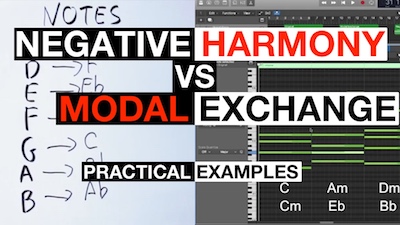Endless Melodic Variations From Negative Harmony And Modal Borrowing


A while ago I published a video explaining Negative Harmony, an interesting theory used among others by Jacob Collier that allows you to create new and spicy chord progressions.
That video got a big response, and many commenters asked to see more practical examples of how Negative Harmony can create variations in melody and harmony at the same time. So, in this new video, I do just that!
(This is a boon to songwriters... if you ever struggled to write musical ideas that 'go together' with a melody you already have, what I show here is your solution)
In this video I also show through examples of how Negative Harmony and Modal Exchange are different. Don't worry about the complex names: these are simple ideas and I do explain them in the video.
In this video you will find:
- Practical applications of Negative Harmony + worked examples (with melody AND chords)
- What is Modal borrowing and how to use it in practice
- The difference between Negative Harmony and Modal Borrowing
In case you need a refresher on why we flip the scale on that particular axis, or what else you can do with Negative Harmony, the first video on Negative Harmony is here:
In this video you will find:
- What is Negative Harmony explained in a simple language
- How Negative Harmony respects the patterns of tension and resolution
- How to apply Negative Harmony to chords and chord progressions
And to learn more about harmony and how to work with it in practice with your guitar (rather than a piano like in most other courses...) look no further than the Complete Chord Mastery course. It's not a book, it's a complete course that will lead you from wherever you are right now to absolute harmonic mastery.
Did you find this video helpful? Do not miss the next Music Theory videos!
Subscribe to the MusicTheoryForGuitar YouTube channel by clicking the button below.